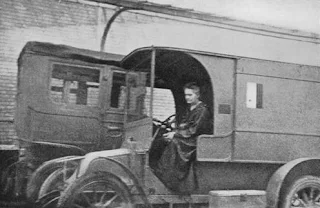Madam Marie Curie was a naturalized French
physicist as well as chemist who conducted pioneering research on
radioactivity. She was born on 7 November, 1867 in Warsaw (the capital of
Poland) Poland. She studied at Warsaw`s Clandestine Flying University and began
her practical scientific training in Warsaw.
She was the first women to won a Noble Prize and
also first person to won twice Noble Prize in two different science. She was
also the first women to become a professor at the University of Paris, and in
1995 became the first women to be entombed on her own merits in the Pantheon in
Paris. Her achievements included the development of – ‘the theory of
Radioactivity’ (a term that she coined), ‘technique for isolating radioactive
isotope’ and ‘the discovery of two elements – Polonium and Radium.
In 1895, Wilhelm Conrad Roentgen discovered the
existence of x-rays, though the mechanism behind their production was not yet
understood. And in 1896, Henri Becquerel discovered that Uranium salts emitted
rays that resembled x-rays in their penetrating power. Becquerel demonstrated
that this radiation, unlike phosphorescence, did not depend on an external
source of energy but seemed to arise spontaneously from Uranium itself.
Influenced by these two important discoveries Curie decided to look into
Uranium rays as a possible field of research for a thesis. In July 1898, Curie
and her husband published a joint paper announcing the existence of an element
which they named ‘Polonium’, in honour of her native Poland.
On 26 December, 1898, the Curie announced the
existence of a second element, which they named ‘Radium’ from the Latin word
for ray. In 1910, Curie isolated pure radium metal. However, she never
succeeded in isolating Polonium, which has a half life of only 138 days.
Under her direction, the World`s first studies into
the treatment of neoplasm were conducted using radioactive isotopes. She
founded the Curie Institute in Paris and in Warsaw, which remain major centre
of medical research today. During WWI, she developed mobile
radiography units to provide x-ray services to field hospitals.
Madam Marie Curie died in 1934, aged 66 at a
Sanatorium in Sancellemoz, France by aplastic anaemia from exposure to
radiation in the course of her scientific research and in the course of her
radiological work at field hospitals during World War I.



Nyc
ReplyDeleteShort Biography.
ReplyDeleteGood crispy article.
ReplyDelete